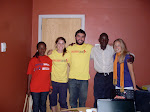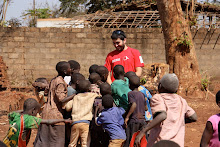Its already been two weeks since I left Boston for Cape Town and in these two weeks I’ve seen a wide range of scenarios that have really left a deep impression on me. For one, the city of Cape Town itself is amazing. I would say that it really isn’t much different from most American or Western cities insofar as it offers a lot of high-end entertainment/food/hotels etc. There were many moments in my Cape Town visit where I really felt like I was in some amazingly beautiful tropical location like Barbados or something. My six months in Senegal last year conditioned me to think of Africa in an entirely different way, and I think the reason for that is the unique nature of Cape Town and South Africa in general. As far as I can see South Africa is split between the extremely rich and the devastatingly poor, and this disparity is particularly relevant to big cities like Cape Town and Johannesburg. On the one hand you have some of the wealthiest people on the planet enjoying 5 star everything and on the other hand you have some of the poorest living conditions in any society anywhere in the world.
I was struck by this disparity more than ever yesterday when GrassRoot Soccer took all of us interns to the largest “township” community in Cape Town. The township is called Kayalitcha and it houses just over a million people from all over South Africa and sub-Saharan Africa – migrants looking for a taste of the inordinate amount of wealth that exists in some parts of Cape Town. Most if not all of the Kayalitcha residents live in a 6 by 6 shack made partly of wood and partly of tin. Each shack is forced to welcome 8 or 9 people each night, with everyone scattered on the floor trying to find whatever warmth or comfort they can. As you can probably imagine, the conditions in these shacks are unspeakably inadequate and against any sort of human rights questions that you may have. Running water is hard to find, with most families being forced to walk across the vast township to simply fill up a bucket for their family. There is no electricity in these shacks and the majority of the toilets are made up of shallow man made holes in the yard – these holes are too shallow to hold too much human waste but unfortunately most families have no alternative so they are forced to deal with whatever diseases and viruses that these outhouses may carry with them. The more I learned about these townships and the more I saw, the more I kept asking myself
How can anyone live in a place like this? How can anyone be happy in a place like this?
And the answer, unsurprisingly for most of you, is that more and more people are deciding not to live in these conditions. Crime rates and suicide rates have skyrocketed in the past couple of years, ultimately making Kayalitcha one of the most dangerous communities in the world. One of the men I met in this community told me the most amazing story which I’ll share with you all – this man was an ex convict and a major criminal in Cape Town. From the age of 5 he carried a gun and was involved in armed robberies. He had been arrested three times, all for armed robbery counts and after the third arrest he made the decision to change his way of life (something that most criminals around here do not realize until its too late). Today, this man, is a respected member of the community. He just started a tour guide business that enables him and his friends to show tourists around Kayalitcha, which in turn allows tourists like myself to get a glimmer into the township way of life. It also allows him and his friends to make a living outside of crime and do something productive for the community. He was a truly amazing man and thinking about his life after he told me his story while watching him play around with smiling township children was a really jarring experience.
Shortly after this eye opening experience, GrassRoot Soccer decided to take whoever was interested for a brief shopping mall on the waterfront in Cape Town. Many of us, myself included, were leaving the following day for our various placements so the mall trip group was big. Most of us just needed adaptor plugs, an extra sweater, some books or other simple things that might be more expensive in Malawi or Kimbereley, South Africa. Ultimately it was hard to find these things in this particular mall because everything inside was too high class for the simple things that we were looking for. This mall had LaCoste, J. Crew, Polo Ralph Lauren and Woolworths but they had nowhere to find cheap books or simple sweaters. This mall would put any mall you’ve ever seen in the states to complete shame. In addition to all of the high-end stores, the mall was full of incredibly gourmet and expensive restaurants. Even the bathrooms were gorgeous, which is not something you say everyday.
As I was walking through this mall with my new GRS friends, I couldn’t help thinking back on the conditions I saw in Kayalitcha. I spent the rest of the night trying to reconcile the two Cape Town communities and to be quite honest I haven’t found a reasonable explanation in my head, maybe I never will. The American equivalent to this situation in Cape Town would be if David Beckham’s mansion were next door to the homeless shelter in South Central LA – total poverty living next to disgustingly gluttonous wealth. To close, I’ll mention a brief conversation I had with one of the US embassy members, an American who had been living in Cape Town since the end of Apartheid. I brought up all these issues with him during our conversation and ultimately he ended by saying that he could not believe that these township inhabitents had not started a total rebellion against the wealthy Cape Town residents. He was saying that if he lived in Kaylitcha, he would have a hard time believing that he wouldn’t resort to crime, protest or rebellion in some way – what other option does he have?


Eren, I LOVE your writing. The moral dilemna you are facing could be, to some extend, transported to other wealthy nations, but, in South Africa, it takes another meaning and I am glad you are one of the voices that can bring it up. It is so easy to ignore and forget! The way you write transports me to vividly to what you see! keep on writing please! Bisous.
ReplyDelete